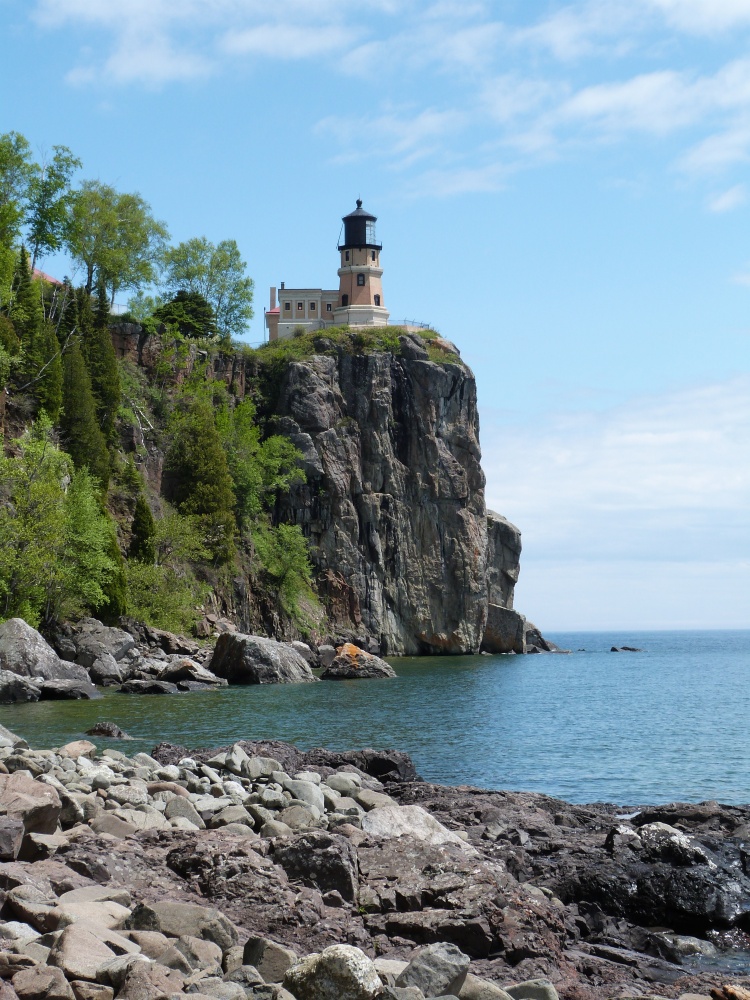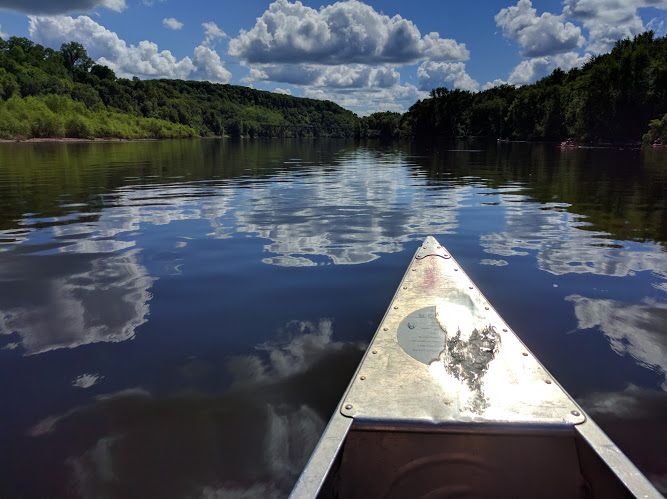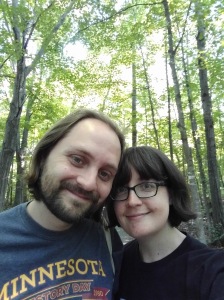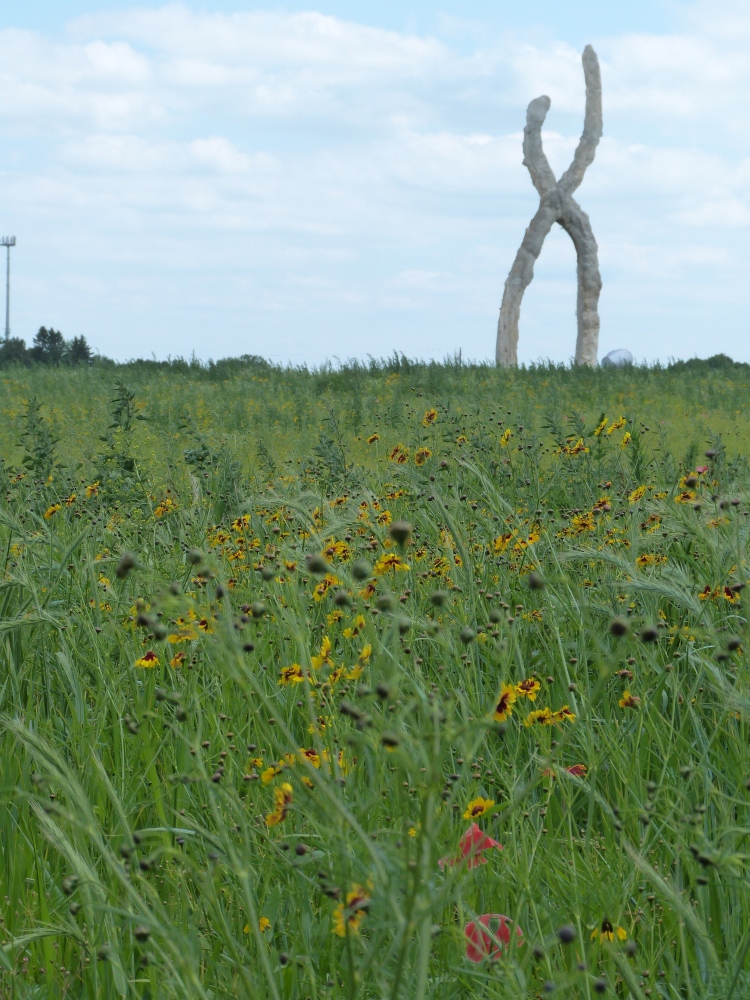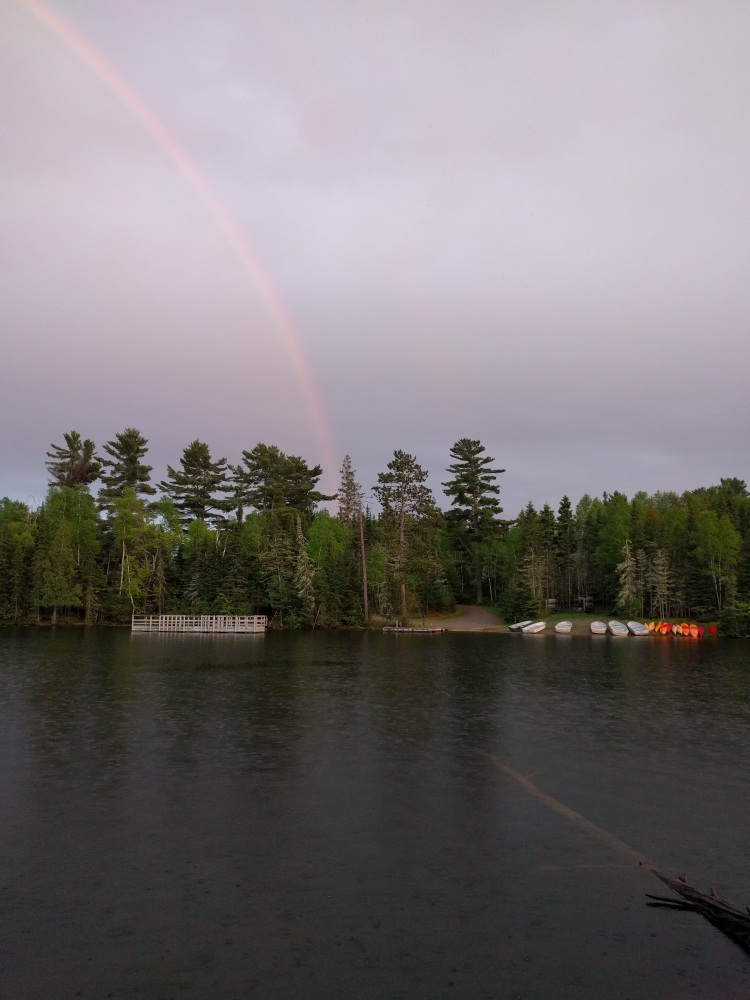
Bear Head Lake on a rainy evening. Photo courtesy of Lindsay Cameron
Having recently returned a few weeks ago from my family’s annual trip across state lines to Door County, Wisconsin (a first for my beloved), I thought I would write a little on the many adventures Lindsay and I have had this summer exploring the state of Minnesota, from the northwoods to the prairies, taking advantage of the state’s natural wonders and seeing some pretty interesting things.
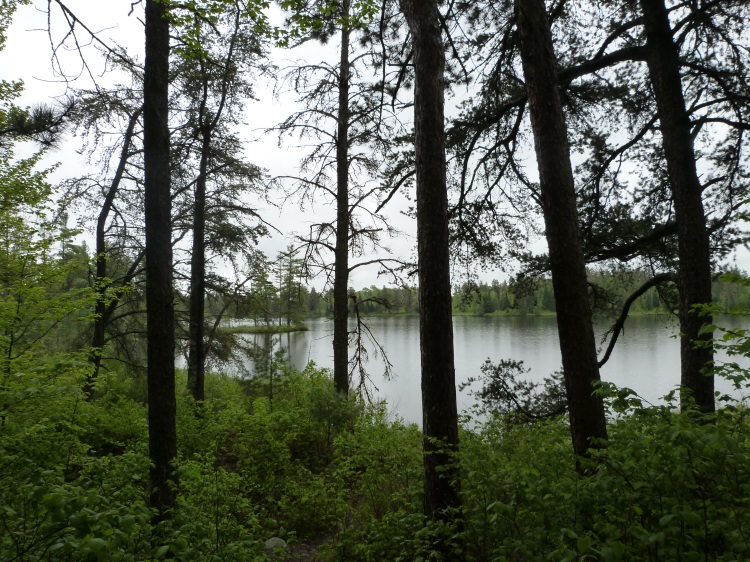
In early June, we drove up to the Iron Range and the Boundary Waters, the first time either of us had visited these famed regions. Taking no heed of the late spring rains, we pitched our tent at Bear Head Lake State Park. A beautiful near wilderness, Bear Head Lake appeared a little mysterious, wreathed in mist and rain as we drove and found our campsite, our first of the year. Lindsay purchased the state’s annual sticker, which we would make use of the rest of the summer and into autumn. Bear Head Lake felt like among the most isolated state parks I’ve visited, making it a good place to get a feel for the conditions of the northwood’s waterways and conifer forests before braving the Boundary Waters or the Gunflint Trail someday. A couple warnings as well for those looking to visit; at this time of year, the mosquitoes were pretty intense! Stepping into the forest, it did not take long for a swarm of whining assaulters to surround us, becoming a maddening cloud around our heads. During an atmospheric expedition to Raspberry Lake through a rolling landscape of billion year old rocks and tall pine trees, I think we ended up with more than a hundred bites between us by the end. This was, at the time, the most mosquitoes I had ever seen. Strong bug spray is a must. Also, I found a deer tick as well, so always self check!
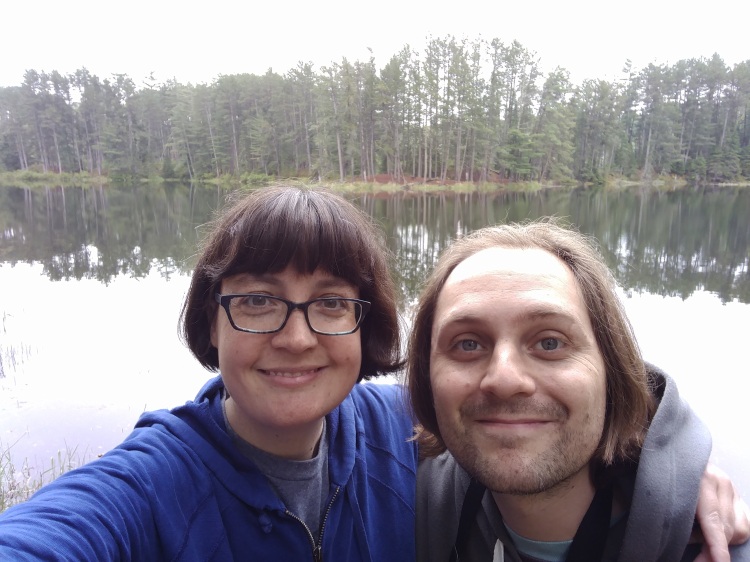
What you can’t see are the mosquitoes. Photo courtesy of Lindsay Cameron
By far the highlight of the trip was our descent into the mine shaft at Soudan Underground Mine State Park. Burrowed nearly half a mile into the ancient metamorphic rock to extract the precious, remarkably pure iron ore, it is an amazing place to visit. The first source of iron on Minnesota’s eponymous Iron Range, the Soudan Mine opened in 1882 and began delving deep into the earth’s crust in 1892, thought of among miners as the best working environment in mining. Miners continued tunneling for iron ore until 1962, in almost complete darkness until the end. Taking a tour introduces you to the dangerous conditions miners encountered underground. In addition to incredibly poor lighting and uneven ground (with the occasional unprotected hole), miners were often organized in groups from different immigrant ethnicities, mutually unacquainted with each other’s languages to cut down on organization but also the ability to communicate danger.
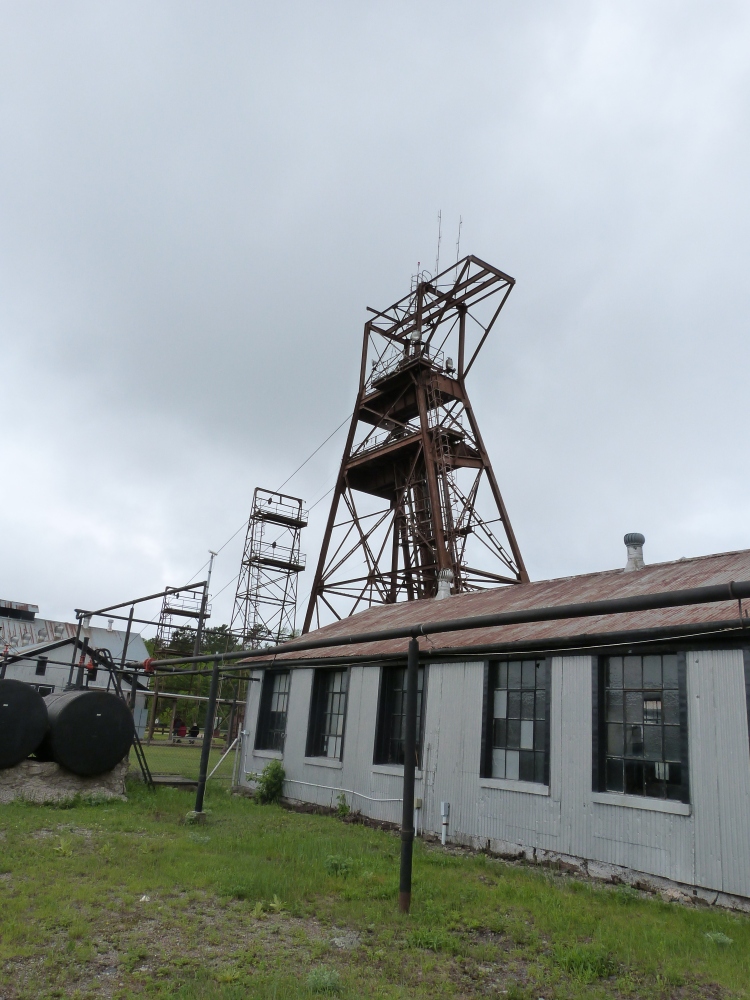
Soudan Mine elevator
The creaking, rattling elevator takes you and a dozen or so other visitors down to the 27th level, 2341 feet, a damp, chilly 51 degrees. Learning about the how the miners crammed into the same little elevator with only small personal lights to guide them through the treacherous maze of pits and tunnels was pretty mind blowing. However, the history aspect is only one of the tours available, though for the other one, you have to move fast!
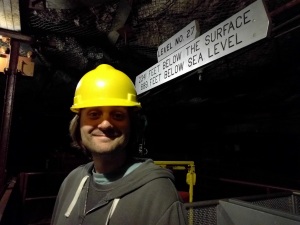
Half a mile underground! Photo courtesy of Lindsay Cameron
For decades, a portion of the 27th level has been utilized for an entirely different project- the Soudan Underground Laboratory. Instead of digging hematite out of the rock, the former mine was used to extract knowledge of the cosmos itself. As part of the University of Minnesota’s particle physics laboratory, the thickness of the rock prevents interference from the ambient cosmic radiation on the surface, allowing for physicists to search for exotic particles without contamination. Several experiments have been underway in the massive cavern, with its huge detector plate, designed to catch a variety of mysterious neutrinos and other Dark Matter being beamed through the earth’s crust all the way from Fermilab, outside Chicago. Taking the informative physics lab tour at the mine is a great way to experience a taste of the mysterious of the universe and how scientists are attempting to plumb them. Even for someone so lost by complex mathematical discussions as myself, the tour was entertaining and informative, simplistic enough to appeal to general visitors but packed with enough information about the various forms of neutrinos and other ghost particles to inspire awe. The mural painted on the wall inside the physics lab is also quite awe inspiring.
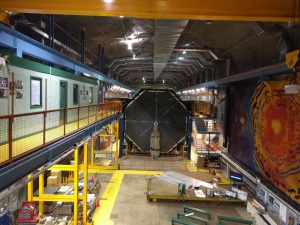
The detector plate and mural, Underground Physics Lab. Photo courtesy of Lindsay Cameron
After twenty five years, though, the two experiments are wrapping up later this year, so people interested in seeing the Underground Lab as a working physics lab have only the next two months to make it up to Soudan to take the tour. We’d really recommend it!
In the nearby town of Ely, the “gateway to the Boundary Waters,” there are many local attractions celebrating the rich ecosystems of the conifer forests and the majestic wildlife that live there. We visited a couple that focus on some of the most popular and feared of the animals native to the region, the International Wolf Center and the North American Bear Center. Whether you are a fan of gray wolves or black bears, both are worth a stop if you have any interest in nature and the environment, and in particular the effect of human interactions on these populations. While both present at least an official neutrality in regards to hunting as a means to balance populations, and each strive to present accurate information on these oft misunderstood creatures, they also each take a slightly different approach. Both rely heavily on the presence of their focus species to familiarize visitors with them and both contrast scientific studies with the folklore and culture surrounding them.
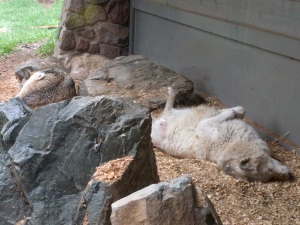
Some sleepy wolves. Photo courtesy of Lindsay Cameron
The International Wolf Center, though, had a more focused experience, centered around the gray wolves and their ambassador pack. For the most part, they seem to let the pack alone to live as naturally as they can in their several acre habitat. If you don’t schedule your visit, the wolves might be in hiding from annoying human interaction. In the informative, interesting, and exhaustive displays, the wolf specimens were carefully noted as from wolves who died from natural causes or accident. At the North American Bear Center, though, the displays seemed more wide ranging, a little less organized. The bear specimens were often from record-breaking hunting trophies donated to the center, though they were also prepared in a style that minimized their perception of ferociousness. Here, too, the resident black bears (all rescues from situations that would make it difficult for them to survive in the wild) were given plenty of acreage to wander, but were presented with plenty of peanuts to entice them to approach the fences.
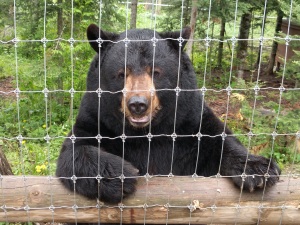
A hungry bear. Photo courtesy of Lindsay Cameron
We spent the next segment of our trip in one of Minnesota’s most popular vacation locales, Grand Marais. Situated between the North Shore of Lake Superior and the Sawtooth Mountains, Lindsay and I had some fun comparing Minnesota’s examples of “mountains” and coasts to her experiences as a Californian. It was a lovely little town, and a place to stay and read alongside the pounding surf of the world’s largest lake, an inland sea unto itself. Even as a driving wind came up off of the lake during our evening jog, making it feel closer to April than June, it was a relaxing stay. The Voyageur Brewing Company offered some tasty beers and good food, and the World’s Best Doughnuts lived up closer to its namesake that you might think.
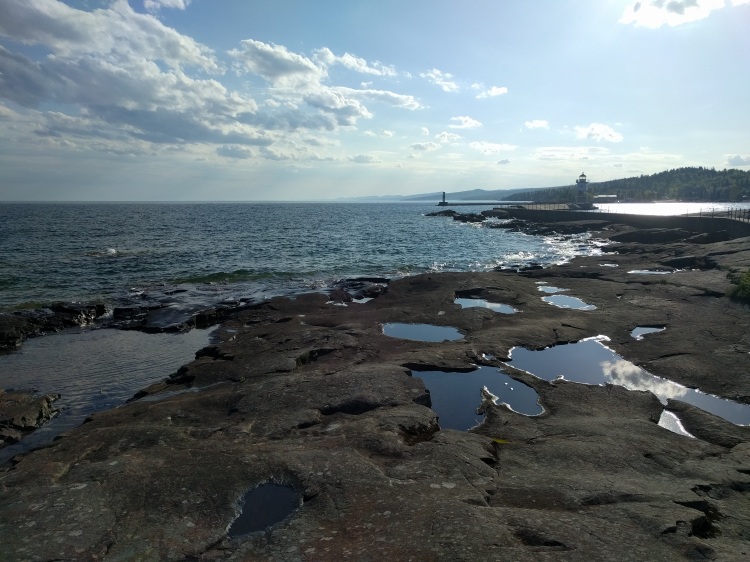
Lake Superior, just outside Grand Marais harbor. Photo courtesy of Lindsay Cameron
We didn’t just enjoy the surf and sun, though, we also checked out one of Minnesota’s two National Monuments, Grand Portage. Some thirty five miles north of Grand Marais, it makes for a very interesting day trip. A fascinating recreation of the North West Trading Company’s 1802 post at the portage, where furs from across North America were traded between the Ojibwe and other indigenous peoples and European newcomers, becoming one of the major zones of interaction between the groups on Lake Superior. After viewing an entertaining and informative video, we explored the lovingly recreated buildings (including costumed living history interpreters who were happy to share all of their knowledge on the canoe technologies that connected the interior of the continent to Montreal and Europe via this bustling spot) and dock on the lake. Walking up the steep hiking trail to the summit of “Mount” Rose gave us a stunning view of the monument, Lake Superior, and the surrounding landscape.
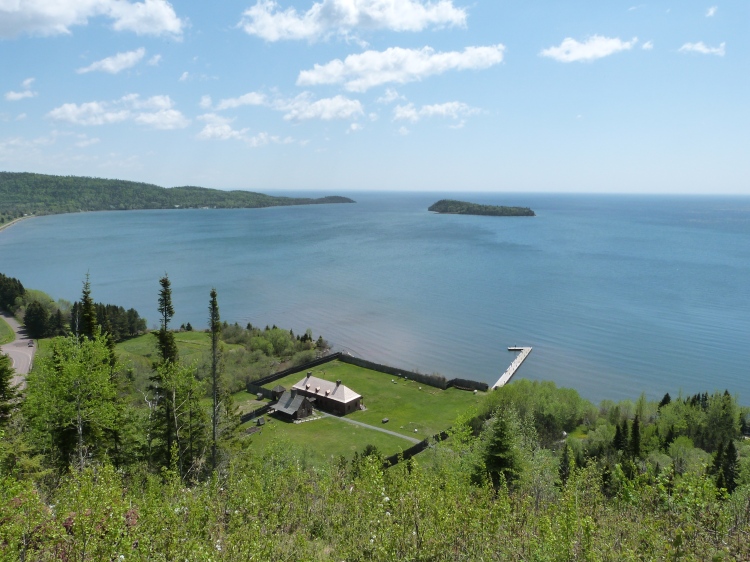
View of Grand Portage from the top of Mount Rose
On the way back to Grand Marais, we also took advantage of the lovely hiking trails at Judge Magney State Park. We hiked along the Brule River, leading up to the beautiful Devil’s Kettle waterfall, which plunges a majestic fifty feet, spraying up impressive plumes of cool mist.
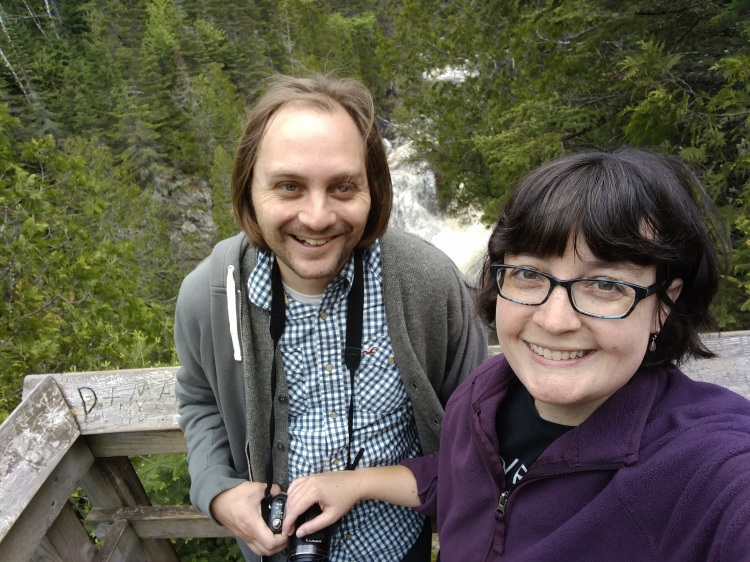
Visiting the Devil’s Kettle! Photo courtesy of Lindsay Cameron
Of course, before heading home to St. Paul, as we drove back along the North Shore towards Duluth, we had to stop by the most photographed location in Minnesota, the lovely Split Rock Lighthouse. I was so happy to stop by this Minnesota icon with Lindsay, who was visiting it for the first time. It is always worth a stop, especially when you have a membership to the Minnesota Historical Society as we do! It was definitely a great way to finish up a wonderful trip!
